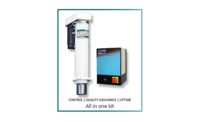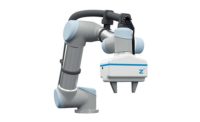Small assembly robots are a class of robot arms consisting of four-axis (SCARA) and six-axis articulated robots with payload capacities up to 20 kg (44 pounds) and reaches up to 1,300 mm (51 inches). Larger robots have different cost of-ownership considerations.
Comparing apples-to-apples costs means understanding which items are included in the initial price quote and which are add-ons.
Robot and controller: Some manufacturers sell the robot arm and controller as a set, while others do not include the controller in the base price. The motor and encoder cable, power cable and electrical connectors may also cost extra.
Controller features: With some manufacturers, the controller comes with all features activated. Other manufacturers have software and firmware licenses, with additional post-sale charges required to activate individual features such as palletizing, singularity avoidance and collision detect. Additional charges may also be required to extend the I/O configuration, or obtain updates and license renewals.
End-of-arm tooling and vision system: Besides the hardware costs of end-of-arm tooling, as well as a vision system, if required, it is important to determine how easy it will be to integrate these with the robot, which can add considerably to the overall cost.
Electrical wiring and air piping: Robots require electrical wiring and air piping that deliver electricity and air to the end-of-arm tooling. If these are installed internally, there is no additional charge; otherwise they may cost extra.
Mounting-configuration firmware: If the robot is to be mounted in a horizontal or inverted position, it may need special firmware, often at an extra cost.
Software: Some manufacturers offer programming-software packages with a low base price, but charge extra for individual features such as 3-D simulation. Other manufacturers include these features as standard.
Training: Most manufacturers offer free training. The cost to the customer, however — in both non-productive employee time and travel expenses — can vary considerably, depending on the length of the training and the distance of the training center from the customer’s facility.
Maintenance: Robots differ greatly in their maintenance requirements. In addition to the cost of the maintenance itself, downtime due to overly frequent maintenance procedures can significantly increase the cost of ownership.
Obsolescence: Some manufacturers introduce new robot and controller models every few years, and quickly stop supporting older ones. Having to replace a robot due to premature obsolescence can be a major factor in cost of ownership. Other manufacturers offer support and upgrades for older robot models for up to 10 years after they are discontinued.
Speed and productivity: All other factors being equal, robot speed counts. A robot that completes more cycles per hour over a given working lifetime will have a lower cost of ownership than another robot that costs less initially, but has lower performance levels.
Energy consumption: Lightweight, efficiently designed robot arms require less power, so their motors draw less electrical current, resulting in significant long-term cost savings.
5 Things to Look for When Choosing a Robot
1. Expertise of the manufacturer: Small, high-speed, high-inertia robots have their own unique design challenges. A manufacturer that specializes in such robots is likely to have expertise that others do not.
2. Type of manufacturer: Robot manufacturers fall into two categories: (1) those whose primary business is selling robots and (2) those whose primary business is producing and selling other types of products, which they manufacture with robots they design and build themselves.
Manufacturers in the second category depend on their robots to keep their products competitive in the marketplace. As a result, they are likely to design robots that have the highest productivity levels, longest working lifetimes and lowest maintenance requirements.
3. High maximum allowable moment of inertia: The higher this figure, the more easily the robot can lift and move a given payload, putting less strain on its motors and resulting in a longer working life.
4. Continuous-duty cycle time: When comparing robot cycle times, ask whether the figures given are for continuous duty or only shorter bursts of an hour or less. If the latter, the robot will normally have to operate at a slower speed, reducing productivity.
5. Compact, efficient robot design: A compact robot design with a small footprint makes integration easier and saves valuable factory floor space.




